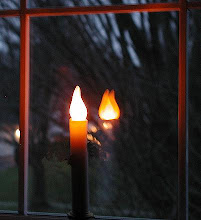World War II Re-enactment
This is a photo of people re-enacting World War II.
My father would only speak of World War II in generalities and superficial descriptions. He never spoke of the horrors of Salerno and Anzio.
It is for us the survivors to honor their memory by continuing to play at war, and to define appropriate icons for future sacrificial feasts.
The spilling of blood is often a necessity, but it need not be a recreation nor need it be recorded and replayed as a sadistic pornography.
What would we say if the many Holocaust Museums were regarded as playful recreation of horrors, rather than a manner of teaching every generation the true nature of evil and why it should be avoided?
Am I mistaken here? Do you think me extreme?
I wish I were mistaken.
Consider the Charles H. Wright Museum of African American History in Detroit; consider those exhibits dealing with slavery. Are these depictions "re-enactments" of a playful nature or are they warning admonitions?
Does it matter? I mean, what are the chances of modern day people trivializing the ways of evil violence?
Actually, they are pretty good.
Referring back to the Charles H. Wright Museum, I am familiar with numerous divergent depictions of slavery, from Gone With The Wind to Birth Of A Nation to Django Unchained. Each of these widely popular films uses slavery and its evils as part of the story very much subsidiary to the main thrust of the plot. And the main part of the plot is a basic trivialization or dismissal of the evil upon which the story is based.
We are fortunate enough to have current examples for both slavery and World War II: Tarantino's Django Unchained already mentioned and his Inglourious Bastards, for even though the latter depicts violent and brutal Jews as well as Nazis, I find this equation to be the acceptance of evil, not an inspection which will lead us to avoid it.
--
photo: Ric Wright, BBC


















No comments:
Post a Comment